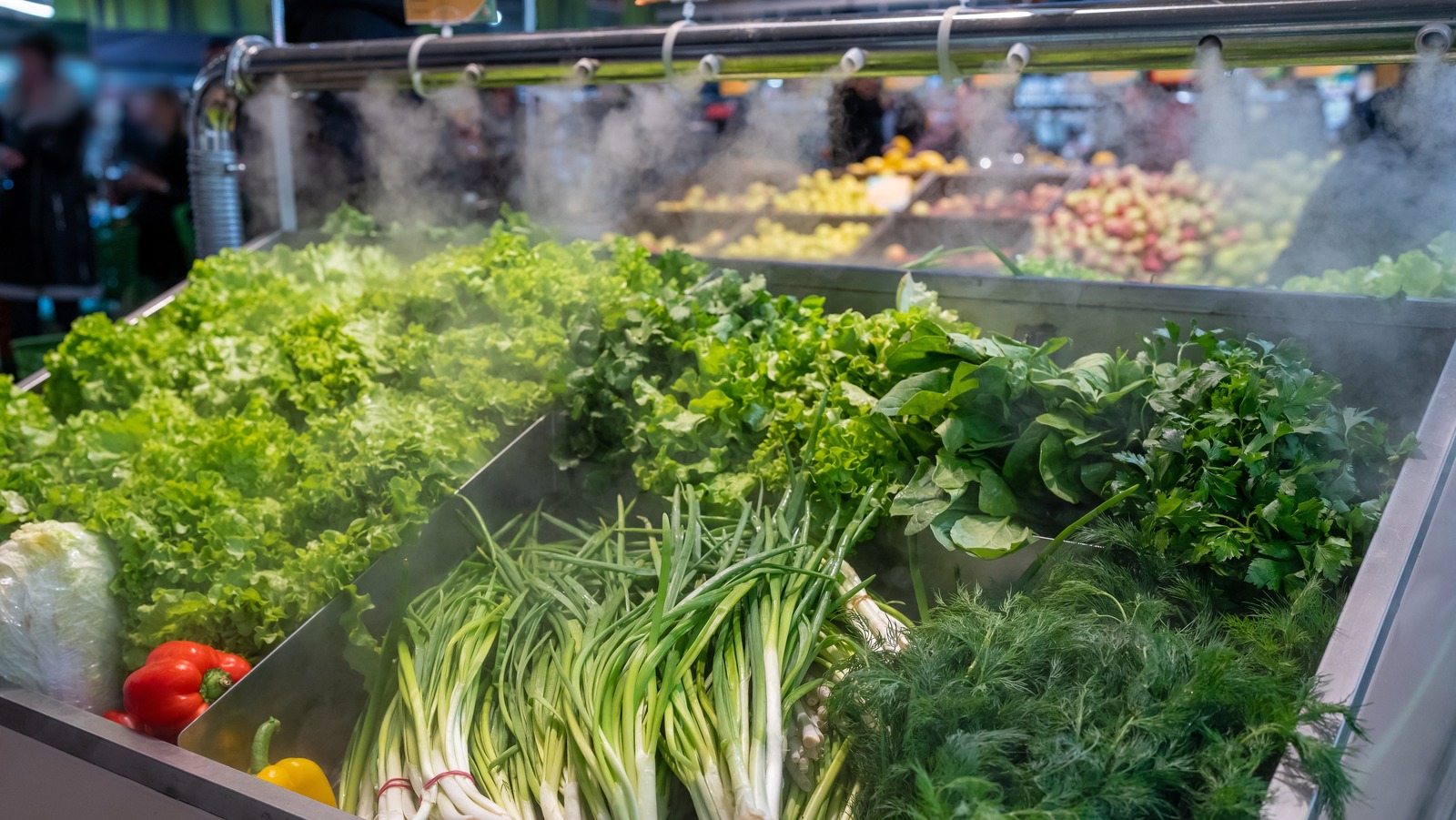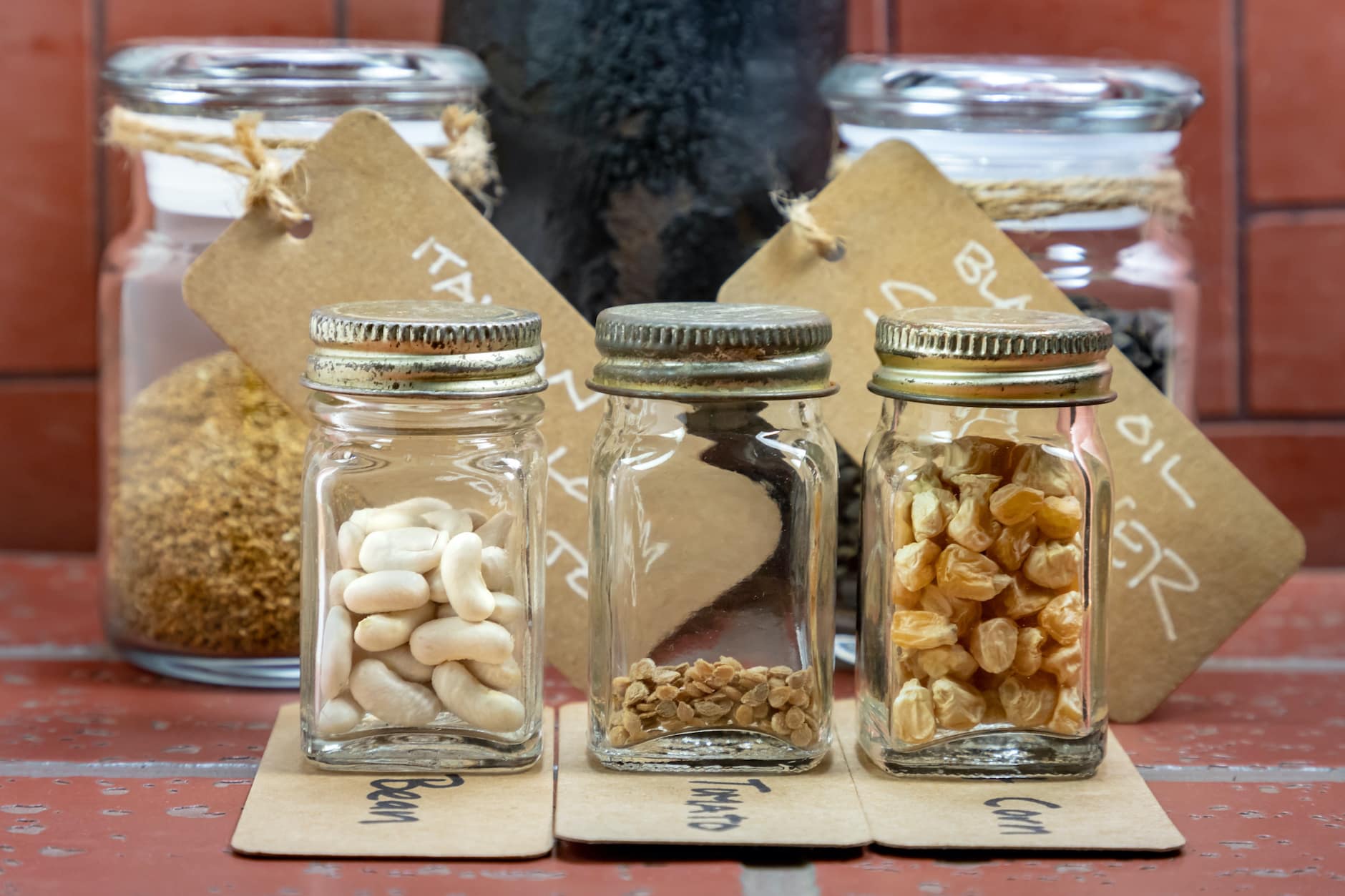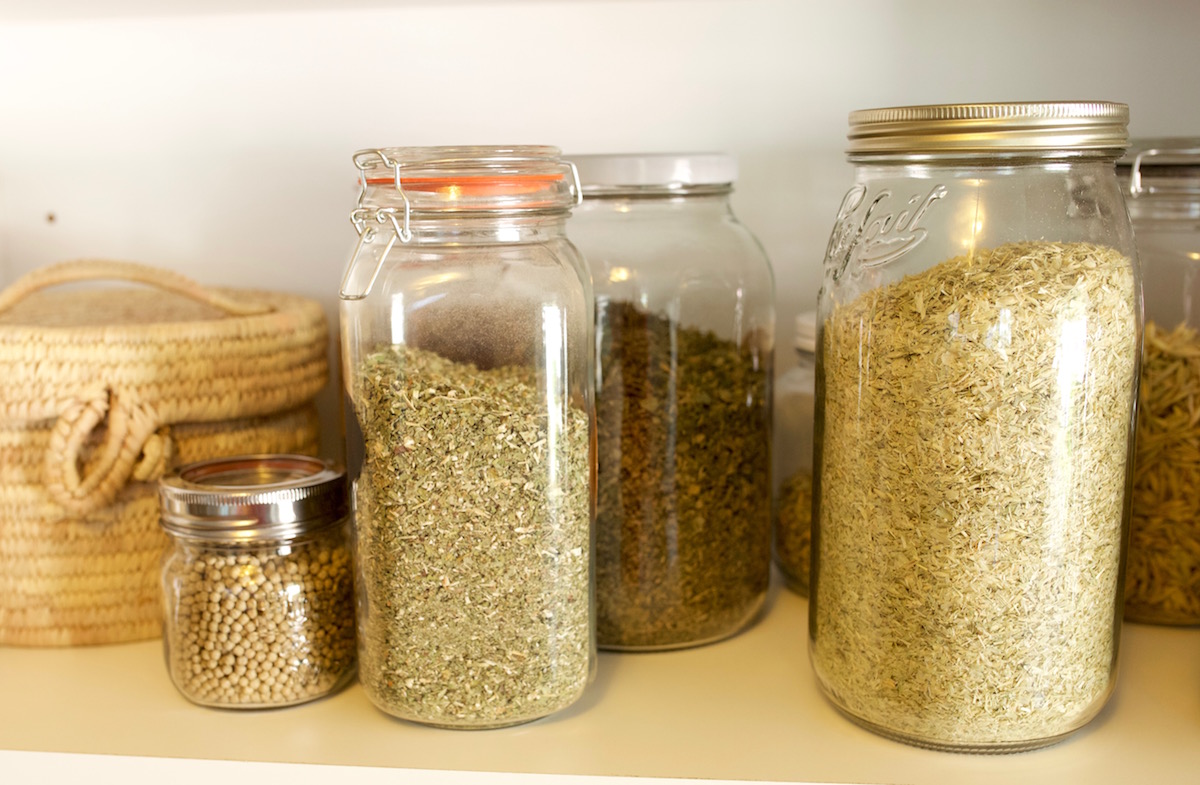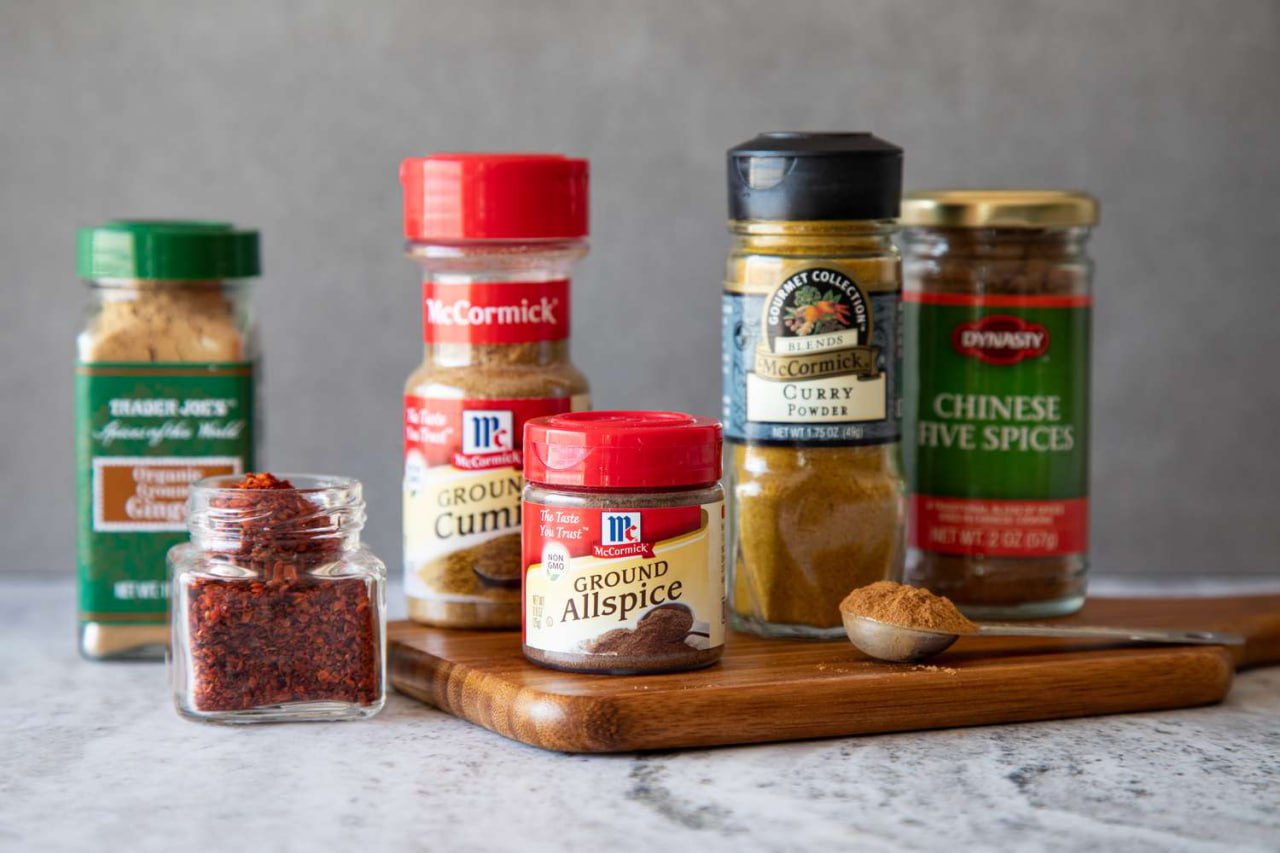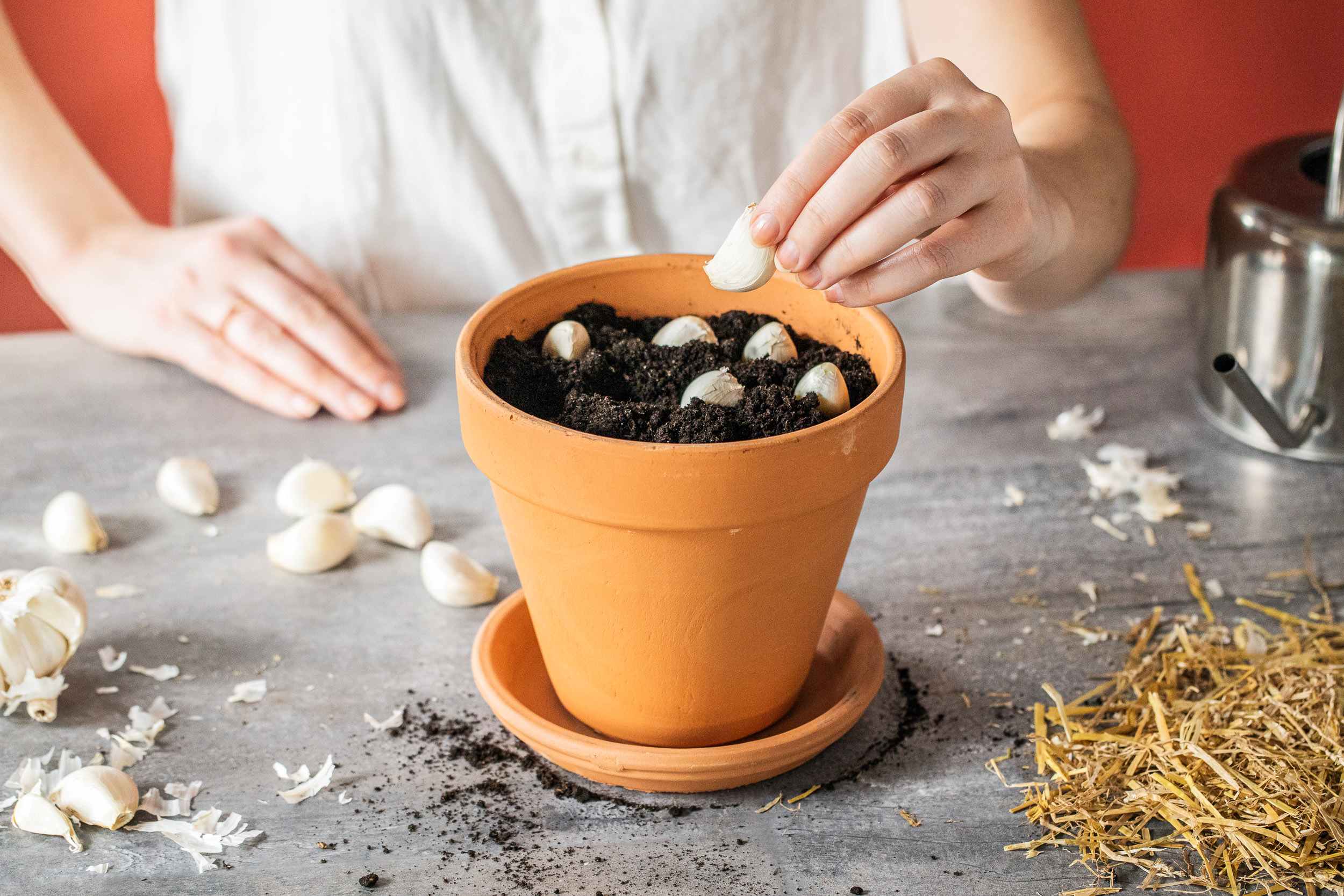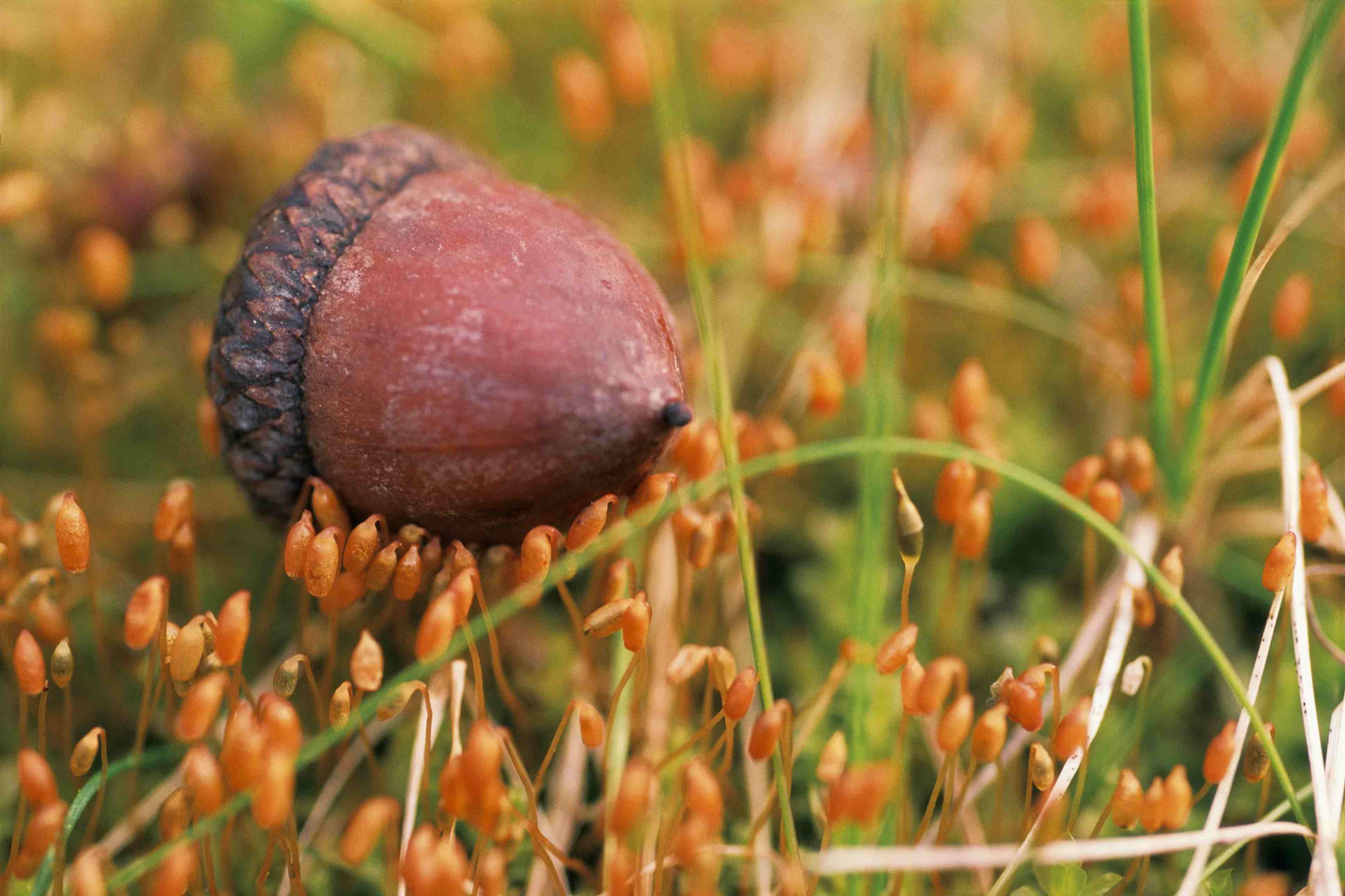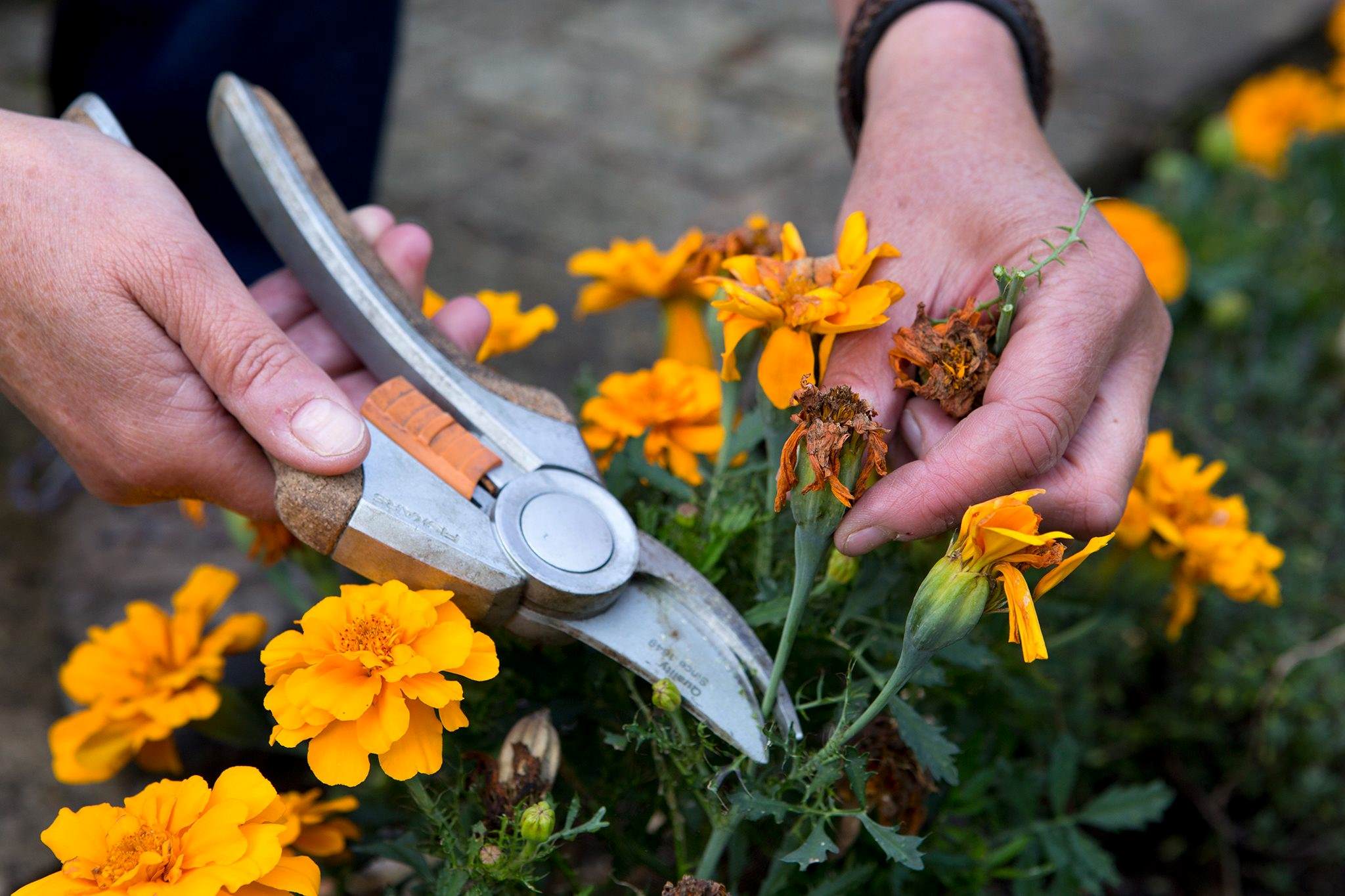Home>Gardening News and Trends>Latest News>How To Store Cut Vegetables


Latest News
How To Store Cut Vegetables
Modified: January 22, 2024
Discover the latest news on how to store cut vegetables for longer freshness. Get expert tips and techniques to keep your veggies crisp and nutritious.
(Many of the links in this article redirect to a specific reviewed product. Your purchase of these products through affiliate links helps to generate commission for Chicagolandgardening.com, at no extra cost. Learn more)
Table of Contents
- Introduction
- Benefits of Storing Cut Vegetables
- Preparing Vegetables for Storage
- Storing Cut Vegetables in the Refrigerator
- Storing Cut Vegetables in the Freezer
- Tips for Extending the Shelf Life of Cut Vegetables
- Best Containers for Storing Cut Vegetables
- Proper Handling and Hygiene Practices
- Frequently Asked Questions (FAQs)
- Conclusion
Introduction
Preparing and cooking fresh vegetables is a time-consuming task, especially when you have a busy schedule. But did you know that you can save time and still enjoy the nutritional benefits of fresh veggies by prepping and storing them in advance?
Storing cut vegetables is a smart strategy that not only helps you save time in the kitchen but also reduces food waste. By properly storing your pre-cut veggies, you can extend their shelf life and have them readily available for salads, stir-fries, or snacking.
In this article, we will explore the benefits of storing cut vegetables, provide tips on how to prepare and store them properly, and share some best practices for maintaining their freshness. Whether you’re a cooking enthusiast or someone looking for convenient meal options, this guide will help you optimize your vegetable storage and make your life easier.
So let’s dive in and discover the art of storing cut vegetables!
Benefits of Storing Cut Vegetables
Storing cut vegetables offers numerous benefits, making it a worthwhile practice for all individuals, whether they are cooking enthusiasts or simply looking to incorporate more vegetables into their diet. Here are some key advantages of storing cut vegetables:
- Time-saving: By prepping and storing cut vegetables ahead of time, you can significantly reduce the time spent on meal preparation. Instead of washing, peeling, and cutting vegetables each time you cook, you can simply grab the pre-cut ones from the refrigerator or freezer and proceed with your recipe.
- Convenience: Storing cut vegetables allows for easy access to healthy ingredients. Whether you need a quick snack or want to add veggies to your meal, having pre-cut options readily available can make it more likely that you’ll choose nutritious options over processed or unhealthy alternatives.
- Reduced food waste: By storing cut vegetables properly, you can extend their shelf life and minimize food waste. Instead of letting unused portions go bad in the fridge, you can store them in a way that keeps them fresh for longer, maximizing their usability.
- Versatility: Having a variety of pre-cut vegetables on hand opens up a world of culinary possibilities. You can easily incorporate them into salads, stir-fries, soups, omelets, and more, giving your meals extra flavor, texture, and nutritional value.
- Nutritional value: Though some nutrients may be lost during the storage process, properly stored cut vegetables can still provide essential vitamins, minerals, and fiber. By consuming pre-cut veggies, you can ensure you’re consistently getting a healthy dose of nutrients, even when you’re short on time.
- Cost-effective: Buying pre-cut vegetables from the grocery store can be more expensive compared to purchasing whole vegetables. By cutting and storing them yourself, you can save money and have greater control over the quality and freshness of the produce.
Now that we understand the advantages of storing cut vegetables, let’s dive into how to properly prepare and store them to maximize their shelf life and maintain their quality.
Preparing Vegetables for Storage
Properly preparing your vegetables before storing them is crucial to maintaining their freshness and quality. Here are some important steps to follow:
- Wash: Start by washing the vegetables thoroughly under cool running water. Use a vegetable brush to remove any dirt or debris. This step helps eliminate any bacteria or contaminants present on the surface of the vegetables.
- Peel and trim: Depending on the vegetable, you may need to peel or trim it before storage. Remove the outer layers of vegetables like onions or carrots, and trim any brown or damaged areas.
- Cut into desired shapes: Decide on the size and shape you want for your cut vegetables. Whether you prefer cubes, slices, or julienne cuts, make sure to use a sharp knife to ensure clean, precise cuts. This helps maintain the texture and appearance of the vegetables.
- Separate leafy greens: If you are storing leafy greens such as lettuce, spinach, or kale, separate the leaves and discard any wilted or discolored ones. Leave them whole or tear them into bite-sized pieces, depending on your preference.
- Blanch (optional): Blanching involves briefly boiling the vegetables and then immediately submerging them in ice-cold water. This process helps preserve the color, texture, and nutritional profile of the vegetables. Blanching is particularly useful for vegetables like broccoli, cauliflower, and green beans.
- Dry completely: Before storing, ensure that the vegetables are completely dry. Excess moisture can lead to spoilage and encourage the growth of mold and bacteria. Use a salad spinner or pat the vegetables gently with a clean kitchen towel to remove any excess water.
Remember, the key to successfully storing cut vegetables lies in maintaining their freshness and preventing spoilage. By following these steps, you can prepare your vegetables for optimal storage and prolong their shelf life.
Storing Cut Vegetables in the Refrigerator
The refrigerator is an ideal place to store cut vegetables, as it helps maintain their freshness and slows down the growth of bacteria. Here’s how to store cut vegetables in the refrigerator:
- Choose the right container: Use airtight containers or resealable plastic bags to store your cut vegetables. Make sure the containers are clean and dry before adding the vegetables.
- Separate different types of vegetables: To prevent cross-contamination and preserve the flavors and textures of different vegetables, store them in separate containers or compartments.
- Label and date: It’s a good practice to label each container with the type of vegetable and the date of storage. This helps you keep track of their freshness and ensures that you consume them within a reasonable time frame.
- Store in the crisper drawer: The crisper drawer in your refrigerator is designed to maintain humidity levels and keep fruits and vegetables fresh. Use it to store your cut vegetables, ensuring that the drawer is not overcrowded, allowing proper air circulation.
- Optimal temperature: Set your refrigerator temperature to around 40°F (4°C) to keep your cut vegetables fresh. Avoid storing them near the back of the fridge or near the freezer compartment, as extreme cold temperatures can cause freezer burn or spoilage.
- Check and refresh: Regularly check your stored cut vegetables for any signs of spoilage or wilting. It’s recommended to refresh the vegetables every few days by giving them a rinse and patting them dry before returning them to the refrigerator.
By following these steps, you can ensure that your cut vegetables stay fresh, crisp, and flavorful in the refrigerator.
Storing Cut Vegetables in the Freezer
If you have a surplus of cut vegetables or want to preserve them for an extended period, freezing is an excellent option. Proper freezing techniques help retain the nutritional value and texture of the vegetables. Here’s how to store cut vegetables in the freezer:
- Blanch the vegetables: Blanching is essential to preserve the color, nutrients, and texture of the vegetables. Start by boiling water in a large pot and then submerge the cut vegetables for a brief period, usually 1-2 minutes. Immediately after blanching, transfer the vegetables to an ice bath to quickly cool them down and stop the cooking process.
- Drain and pat dry: After blanching, drain the vegetables using a colander and gently pat them dry with a clean kitchen towel to remove excess moisture.
- Portion the vegetables: Divide the blanched and dried vegetables into portion sizes that you will likely use in one cooking session. This will make it easier to grab the desired amount without thawing the entire batch.
- Package for freezer: Wrap each portion tightly in plastic wrap or place them in airtight freezer-safe containers or resealable bags. Squeeze out as much air as possible to minimize freezer burn and maintain the quality of the vegetables.
- Label and date: It’s crucial to label each package with the type of vegetable and the date of freezing. This helps you keep track of their freshness and ensures that you consume them within a recommended time frame.
- Store in the freezer: Place the packaged vegetables in the coldest part of your freezer, such as the back or bottom shelf. This ensures consistent freezing and helps maintain the quality of the vegetables.
- Freeze at 0°F (-18°C) or below: Set your freezer temperature to at least 0°F (-18°C) to ensure proper preservation of the vegetables. Freezing at lower temperatures helps retain the flavor, texture, and nutritional value of the vegetables for a longer time.
- Thawing and using frozen vegetables: When you’re ready to use the frozen vegetables, thaw them in the refrigerator overnight or quickly thaw them under running water. Avoid refreezing previously thawed vegetables, as it can affect their quality.
With these steps, you can effectively store and preserve your cut vegetables in the freezer, allowing you to enjoy their freshness and nutritional benefits even after an extended period.
Tips for Extending the Shelf Life of Cut Vegetables
Proper storage techniques alone may not always be enough to maximize the shelf life of cut vegetables. Implementing these additional tips can help you extend their freshness and quality:
- Keep it cool: Store cut vegetables in the coolest part of your refrigerator to slow down the rate of spoilage. Lower temperatures help to maintain the texture and color of the vegetables.
- Handle with clean hands: Always wash your hands before handling cut vegetables to eliminate any potential contamination. This helps prevent the growth of harmful bacteria and prolongs the freshness of the vegetables.
- Avoid excess moisture: Excess moisture can lead to mold and spoilage. Ensure the cut vegetables are thoroughly dried before storing them to prevent the growth of bacteria and fungi.
- Store herbs properly: Fresh herbs like basil, cilantro, or parsley should be stored differently. Trim the ends, place them in a glass of water, and cover loosely with a plastic bag. This keeps them fresh for longer.
- Rotate your stock: When storing cut vegetables, maintain a “first in, first out” approach. Use the older batches first to ensure that none of the vegetables go past their prime.
- Check for spoilage: Regularly inspect your stored cut vegetables for any signs of spoilage, such as a slimy texture, foul odor, or discoloration. Discard any vegetables that appear spoiled to prevent them from affecting the freshness of the others.
- Freeze excess vegetables: If you have more cut vegetables than you can consume in a reasonable time, consider freezing them following the proper freezing techniques mentioned earlier. This way, you can avoid waste and have a backup supply of vegetables.
- Use opaque containers: Light exposure can degrade the quality of cut vegetables. Store them in opaque containers or cover them with aluminum foil to block out light and maintain their quality.
- Don’t wash before storing: It’s best not to wash the cut vegetables right before storing them, as the added moisture can reduce their shelf life. Instead, wash them just before using to ensure maximum freshness.
- Consider vacuum sealing: Vacuum-sealing your cut vegetables can help extend their shelf life by reducing exposure to air. Vacuum-sealed bags or containers can help maintain the quality and freshness of the vegetables for longer periods.
By implementing these tips, you can enhance the longevity of your cut vegetables and enjoy their freshness and nutritional benefits for an extended period.
Best Containers for Storing Cut Vegetables
Choosing the right containers for storing cut vegetables is essential to maintain their freshness and prevent any cross-contamination. Here are some of the best container options for storing cut vegetables:
- Airtight containers: Use airtight containers made of glass or BPA-free plastic to store cut vegetables. These containers prevent air from entering, helping to maintain the freshness and flavors of the vegetables while also preventing any odor transfer.
- Resealable plastic bags: Zip-top or resealable plastic bags are convenient for storing cut vegetables, especially leafy greens or smaller veggies. Expel excess air from the bags, seal them tightly, and store them in the refrigerator to preserve the quality of the vegetables.
- Glass jars: Glass jars with air-tight lids are an excellent option for storing cut vegetables in the refrigerator. They provide a clear view of the contents, making it easy to identify and locate specific vegetables. Remember to use jars with wide mouths for easy access.
- Storage containers with compartmentalized trays: If you plan to store different types of cut vegetables in the same container, look for containers with compartmentalized trays. These containers allow you to separate and store different vegetables without their flavors or moisture mixing together.
- Salad spinners: Salad spinners are not only great for washing and drying greens, but they can also double as storage containers. After washing and drying your cut vegetables, place them in the salad spinner and cover with the lid. This prevents wilting and keeps the vegetables fresh for longer.
- Vacuum storage bags: Vacuum sealing is an effective way to extend the shelf life of cut vegetables. Vacuum-sealed bags remove excess air, reducing the risk of oxidation and spoilage. These bags are particularly useful for preserving the freshness and quality of cut vegetables in the freezer.
- Bento boxes or meal prep containers: Bento boxes or meal prep containers with multiple compartments are ideal for storing cut vegetables alongside other ingredients or dishes. These containers help to keep different food items separated while providing a convenient and portable option for meals on the go.
When choosing containers, opt for ones that are non-toxic, reusable, and dishwasher-safe for easy cleaning and maintenance. Remember to label each container with the contents and date to help keep track of their freshness.
By using these recommended containers, you can effectively store your cut vegetables, maintain their quality, and easily access them when needed.
Proper Handling and Hygiene Practices
Proper handling and hygiene practices play a crucial role in maintaining the freshness and safety of cut vegetables. Follow these guidelines to ensure that your vegetables stay fresh and free from contamination:
- Wash your hands: Always wash your hands thoroughly with soap and warm water before handling cut vegetables. This removes any potential bacteria or contaminants that can be transferred to the vegetables.
- Clean cutting surfaces and utensils: Sanitize cutting boards, knives, and other utensils used for cutting vegetables. Wash them with warm soapy water or run them through the dishwasher to prevent cross-contamination.
- Keep work area clean: Maintain a clean and organized work area when preparing and storing cut vegetables. Regularly wipe down countertops and surfaces with a food-safe cleaner or a mixture of water and vinegar.
- Prevent cross-contamination: To avoid cross-contamination between different types of vegetables, use separate cutting boards and knives for different vegetables. This prevents the transfer of flavors, bacteria, and molds.
- Store raw and cooked vegetables separately: Keep raw cut vegetables separate from cooked vegetables to prevent the spread of bacteria. Store them in separate containers or compartments in the refrigerator.
- Rotate storage: When taking cut vegetables out of storage, always use the oldest batches first. This ensures that no vegetables go past their prime and reduces the risk of spoilage.
- Discard spoiled vegetables: Regularly check your stored cut vegetables for any signs of spoilage, such as sliminess, mold, or foul odors. Discard any vegetables that show signs of spoilage to prevent them from contaminating others.
- Maintain proper refrigerator temperature: Ensure that your refrigerator is set to the correct temperature of around 40°F (4°C) to keep cut vegetables fresh. A too-high or too-low temperature can affect their quality and increase the risk of spoilage.
- Follow storage guidelines: Adhere to the recommended storage times for different vegetables. Some vegetables may have shorter shelf lives than others, so it’s essential to consume them within the specified time frame for optimal freshness.
- Minimize touching: Avoid handling cut vegetables excessively, as the natural oils from your hands can cause them to spoil more quickly. Use tongs or clean utensils to handle the vegetables whenever possible.
By adopting these proper handling and hygiene practices, you can maintain the freshness, quality, and safety of your cut vegetables, ensuring that they remain a healthy and delicious addition to your meals.
Frequently Asked Questions (FAQs)
Q: Can I store all types of vegetables in the same way?
A: While many vegetables can be stored in a similar manner, some may require specific storage conditions. For example, leafy greens like lettuce or spinach should be stored in a breathable container, while root vegetables like carrots and potatoes should be stored in a cool, dark place. It’s always best to check specific storage recommendations for each type of vegetable.
Q: How long can I store cut vegetables in the refrigerator?
A: The shelf life of cut vegetables in the refrigerator can vary depending on the type of vegetable and how it has been stored. In general, most cut vegetables can be stored in the refrigerator for 3-7 days. However, it’s crucial to regularly check for signs of spoilage and use the “sniff and taste” test to ensure they are still fresh and safe to consume.
Q: Can I freeze all types of cut vegetables?
A: While many vegetables can be successfully frozen, some vegetables may not retain their texture or quality after thawing. Leafy greens, cucumbers, and tomatoes have high water content, which can make them lose their crispness when frozen. It’s best to blanch vegetables before freezing to help preserve their color, texture, and nutritional value. Refer to specific vegetable freezing guides for more detailed instructions.
Q: Can I store cut vegetables with fruits?
A: It’s generally recommended to store cut vegetables separately from fruits. Fruits release ethylene gas as they ripen, which can accelerate the spoilage of vegetables. Additionally, some fruits have strong aromas that can be absorbed by vegetables, altering their taste. If you do store them together, make sure to separate them or use airtight containers to minimize odor transfer.
Q: Is it safe to eat cut vegetables that have turned slightly brown?
A: Slight browning of cut vegetables, especially those exposed to air, is a natural enzymatic reaction and does not necessarily indicate spoilage. However, it’s best to trim off any discolored portions before consuming. If the vegetables appear slimy or have a foul odor, it is a sign of spoilage, and they should be discarded.
Q: Can I store cut vegetables at room temperature?
A: It is not recommended to store cut vegetables at room temperature for an extended period. Room temperature can promote bacterial growth and spoilage. Storing cut vegetables in the refrigerator or freezer is the safest way to maintain their freshness and prevent spoilage.
Q: Can I store cut vegetables in water?
A: While storing some vegetables in water can help maintain their freshness, it’s generally not recommended for cut vegetables. Water can speed up the wilting process and lead to the loss of water-soluble nutrients. It’s best to store cut vegetables in airtight containers or resealable bags in the refrigerator to maintain their quality.
Q: Can I cut vegetables in advance for meal prep?
A: Absolutely! Cutting vegetables in advance for meal prep is a great time-saving strategy. Just make sure to store them properly in the refrigerator or freezer following the guidelines mentioned earlier to maintain their freshness and quality.
Q: How can I revive wilted cut vegetables?
A: To revive wilted cut vegetables, you can soak them in ice-cold water for a few minutes. This can help crisp them up and restore their freshness. Alternatively, you can blanch them quickly in boiling water and then transfer them directly into ice water to refresh their texture.
Q: Can I store pre-cut vegetables from the grocery store?
A: While pre-cut vegetables from the grocery store offer convenience, they may not have the same freshness and shelf life as freshly cut vegetables. It’s advisable to check the expiration date on pre-cut vegetable packages and consume them within the recommended timeframe for optimal quality.
These frequently asked questions provide a better understanding of the storage and handling practices for cut vegetables, allowing you to make informed decisions and ensure the freshness and safety of your produce.
Conclusion
Storing cut vegetables is a practical and efficient way to save time in the kitchen while enjoying the nutritional benefits of fresh produce. By following proper storage techniques and handling practices, you can extend the shelf life of cut vegetables and reduce food waste.
From washing and preparing vegetables to choosing the right storage containers, each step in the process plays a crucial role in maintaining the quality and freshness of your cut vegetables. Whether you store them in the refrigerator or freezer, it’s essential to ensure proper temperature, hygiene, and handling practices to prevent spoilage and maintain their nutritional value.
By adopting the tips and guidelines provided in this article, you can make the most of your cut vegetables and have a readily available supply for your favorite recipes, salads, and snacks. Storing cut vegetables not only saves you time and money but also promotes healthy eating habits and reduces food waste.
Remember to regularly check for signs of spoilage, rotate your stock, and label containers with dates to keep track of their freshness. By incorporating these practices into your routine, you can enjoy the convenience and benefits of having fresh cut vegetables at your fingertips.
So whether you’re a busy professional, a cooking enthusiast, or someone looking for convenient ways to incorporate more vegetables into your diet, make storing cut vegetables a part of your routine. Take control of your meal preparation, maximize the shelf life of your produce, and embrace a healthier, more efficient lifestyle.
